
- English
- ePUB (mobile friendly)
- Available on iOS & Android
Ancient Wars c.2500BCE–500CE
About this book
The ancient world was a time when advanced edged weapons made of metal, sophisticated bows and siege engines replaced the basic weaponry of the prehistoric era, and great generals such as Alexander the Great developed battle tactics and strategies that are still studied today. This volume looks at the battles that were fought across the globe, whether it was the epic naval battles of Greece, or archers on elephants in India. The Ancient Wars c.2500BCE-500CE – the first volume in the Encyclopedia of Warfare Series –shows the conflicts that raged for two millennia as the first governments emerged and states began to develop. Starting with the earliest battles known to history, this is a chronological guide to conflict on every continent, from the Macedonian and Roman Empires to the great Chinese dynasties, from the early battles for Jerusalem to Hadrian's Wall, from the sieges of Troy to the fall of Rome. It tells the stories of how entire cities were razed to the ground, and how misjudgements of terrain and bad weather led to crushing defeats on the battlefield. Featuring full colour maps illustrating the formations and strategies used, plus narrative descriptions of the circumstances behind each battle, this is a comprehensive guide to the conflicts of the ancient world.The Encyclopedia of Warfare Series is an authoritative compendium of almost five millennia of conflict, from the ancient world to the Arab Spring. Written in a style accessible to both the student and the general enthusiast, it reflects the latest thinking among military historians and will prove an indispensible reference guide.
Frequently asked questions
- Essential is ideal for learners and professionals who enjoy exploring a wide range of subjects. Access the Essential Library with 800,000+ trusted titles and best-sellers across business, personal growth, and the humanities. Includes unlimited reading time and Standard Read Aloud voice.
- Complete: Perfect for advanced learners and researchers needing full, unrestricted access. Unlock 1.4M+ books across hundreds of subjects, including academic and specialized titles. The Complete Plan also includes advanced features like Premium Read Aloud and Research Assistant.
Please note we cannot support devices running on iOS 13 and Android 7 or earlier. Learn more about using the app.
Information
Ancient Wars
c.2500 BCE–500 CE
Mediterranean & Middle Eastern Wars c.2500–500 BCE
Nimrod came to rule Mesopotamia through military conquest, and founded several cities. According to Armenian legends, he was defeated near Lake Van by the Armenian patriarch Haik, who killed him with a bow shot from a great distance.
The earliest battle currently known to history arose from a border dispute between the city-states of Lagash and Umma. Carvings of the battle suggest that the main fighting force involved was a dense phalanx of spearmen.
King Sargon of Akkad is credited with forming the world’s first true army. Leading a force of 5000 professional soldiers armed with bows and bronze hand weapons, he subdued and conquered Mesopotamia.
During the conquest of Sumer, Sargon the Great’s army attacked and destroyed the city of Uruk. Surviving forces from the city formed part of a great Sumerian alliance, which was in turn defeated.
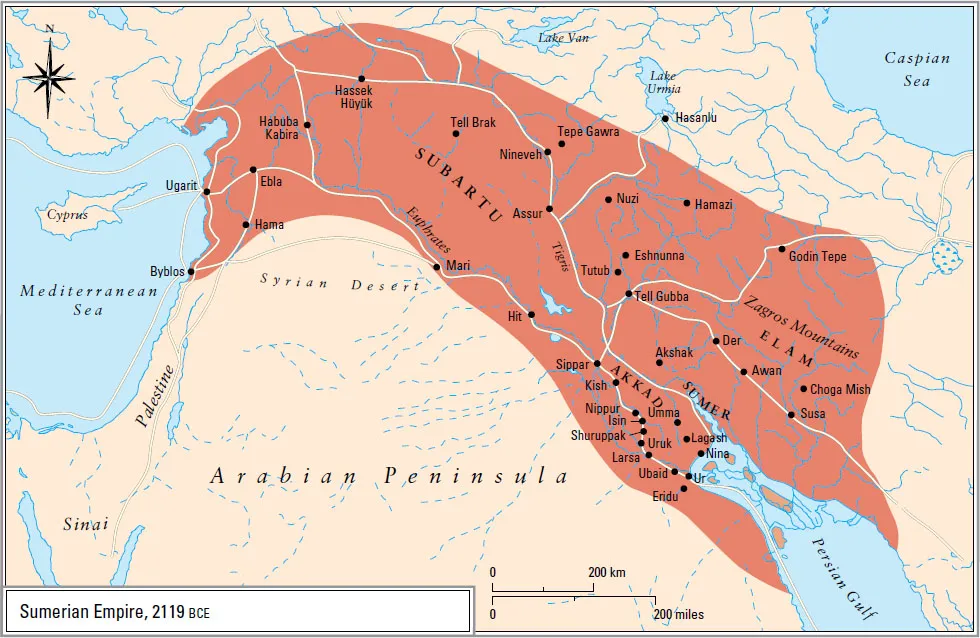
Among the foes faced by Sargon the Great was Kashtubila, king of Kazalla, a city to the west of Mesopotamia. Kashtubila opposed Sargon but was comprehensively defeated. His city was razed to the ground, so thoroughly destroyed that it was said that birds could not find anywhere to perch in the ruins.
Sargon’s early campaigns were directed against city-states in the fertile crescent, cementing his power over the whole region. The city of Mari on the Euphrates river was one of his targets. Once conquered, it became an Akkadian administrative centre.
The location of Yarmuti is unclear, but it may have been a trading port on the Phoenician coast. Many of Sargon’s campaigns were directed at securing trade routes and valuable resources, which would make such a port a logical target.
Ebla was an important trade centre in northern Syria. It is claimed that Sargon of Akkad captured and destroyed the city, though the date and circumstances remain unclear. Ebla eventually regained some of its power, but was attacked again by Sargon’s grandson, Naram-Sin.
Sargon’s campaigns took him northward into what is today known as Turkey, to the Amanus and Taurus mountains. It is unclear exactly what foes he faced here, possibly tribal peoples and small independent city-states.
Changing agricultural conditions weakened the Sumerian city-states as pressure from Amorite tribes increased. Unable to feed its population, Sumeria was incapable of resistance and was gradually overrun by the invaders.

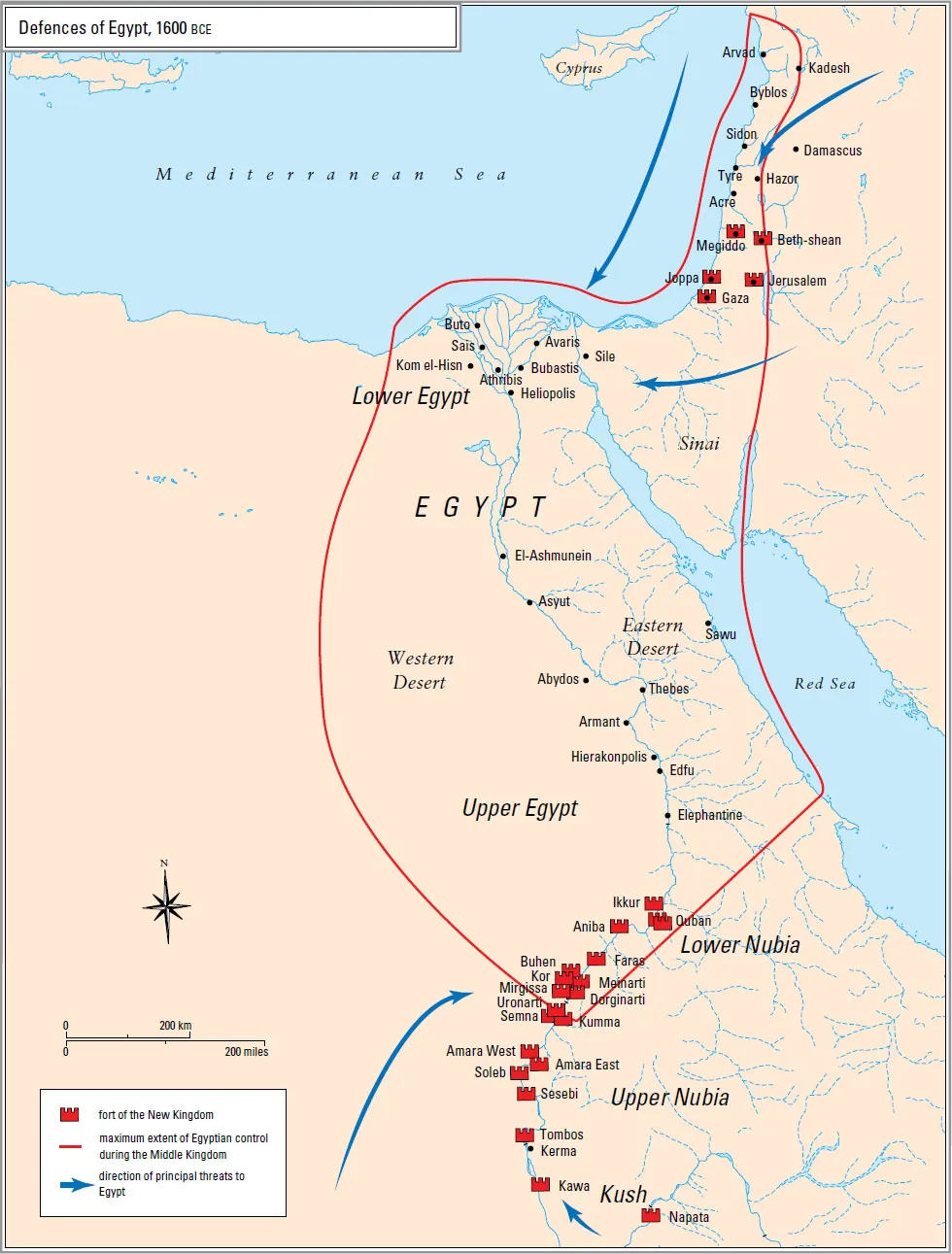

The city-state of Ur was sacked by invading Elamite tribes from the east, after which Sumeria came under Amorite rule. The Amorites gradually became absorbed into the culture of the region, forming the basis for the Babylonian Empire.
Predecessors of Hammurabi, the Amorite king of Babylon, had conquered some of the surrounding city-states. Hammurabi built on their success by making alliances then turning on his former allies, establishing Babylon as the dominant power in southern Mesopotamia.
As Babylon declined in power, the Hittites were able to advance down the Euphrates river, sacking Aleppo. Internal troubles prevented the Hittites from consolidating their gains, and they ceased to be a major power for several decades.
Pharoah Tuthmosis III was co-regent with his aunt, Hapshepsut, for the first 22 years of his reign. During this time he served as head of the army, gaining a reputation as an excellent commander. An alliance of Canaanite princes attempted to take advantage of the inevitable disruption caused by Hapshepsut’s death in order to secede from Egyptian rule. However, they had miscalculated; Tuthmosis moved rapidly against them at the head of a well-organized army. The subsequent battle at Megiddo was extensively recorded at the behest of the victorious Tuthmosis, becoming the first fully documented battle in history.
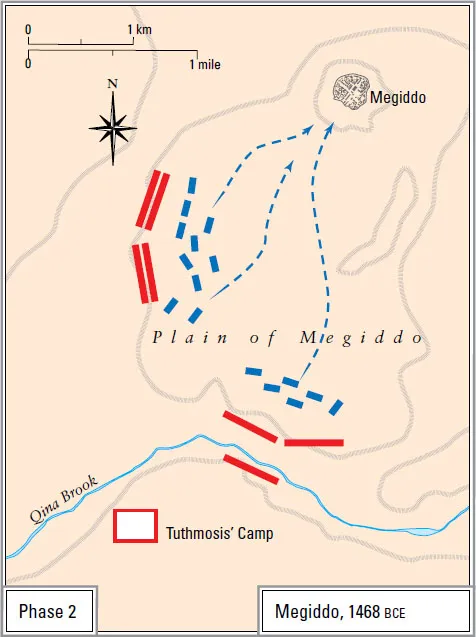
Tuthmosis III of Egypt undertook several campaigns into Syria, conquering numerous towns. These campaigns may have been supported by naval transport for supplies or even troops. The economies of Syria were left in ruins as a result, reducing the chances of a successful rebellion.
The Egyptian army gained the advantage of surprise by carrying out what appeared to be merely another campaign in Syria, then suddenly marching to the Euphrates and crossing in boats they had carried with them. The Mitanni were totally unprepared and easily defeated.
The Minoan civilization arose on the island of Crete around 2700 BCE. Around 1400 BCE, a series of natural disasters weakened the Minoans, whose culture was displaced by the more warlike Mycenean Greek civilization.
In the late Bronze Age, Babylonia was ruled by the Kassites, who conquered Assyria. Assyria rebelled and began to rebuild its power, leading to the battle of Sugagi, which established the border between the two states.
Egyptian dominance over Canaan waxed and waned several times as Egypt both lost territory to rebellions and invasions, then retook it. The region was somewhat too remote to maintain permanent strong control, but too close to permit a foreign power to dominate. The increasing power of the Hittites, who originated north of Canaan, resulted in several clashes and, consequently, improvements in military technology. Among these developments was an improved axe with better performance against armour. Egyptian chariots were also made lighter and faster, permitting the chariot force to become an elite striking arm.
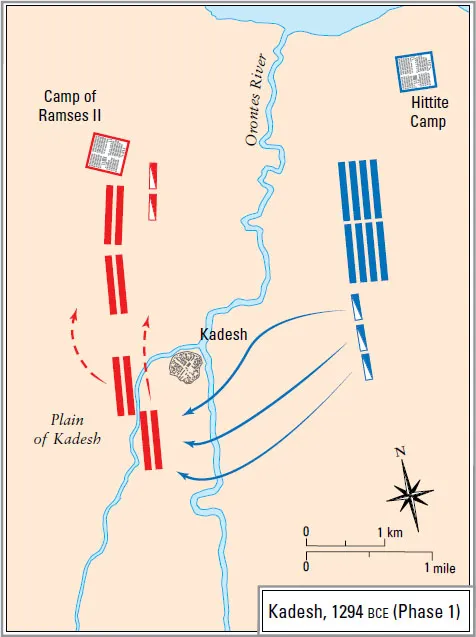
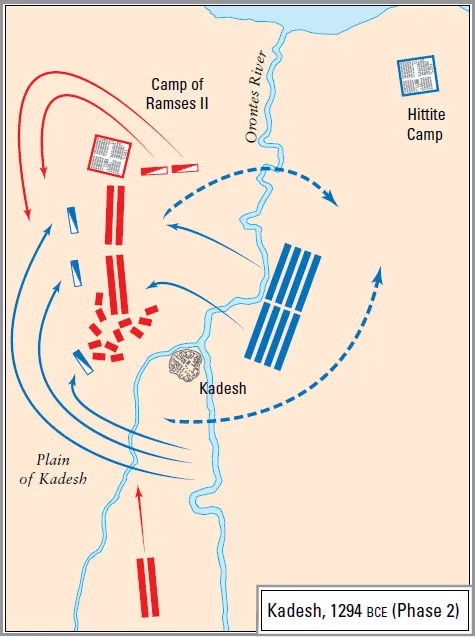
Dapur was one of several rebel Canaanite cities recaptured by Pharoah Ramses II. He chose to use assault rather than siege tactics. Ladders were used to scale the walls while axe-armed troops broke through the gates.
It is thought that legends of the 10-year siege of Troy are based on historical events, though proof is sketchy. Traditionally, Troy was besieged by an alliance of Achaean Greeks who finally destroyed the city.

After sacking many cities around the eastern end of the Mediterranean, the Sea Peoples advanced on Egypt by sea and overland. The Pharoah constructed the world’s fir...
Table of contents
- Cover
- Title Page
- Copyright Page
- Contents
- Maps
- Foreword to the Series
- Ancient Wars c.2500 BCE–500 CE
- Authors and Contributors
- How to Use the Maps
- Key to the Map Symbols
- Battles and Sieges Index
- General Index